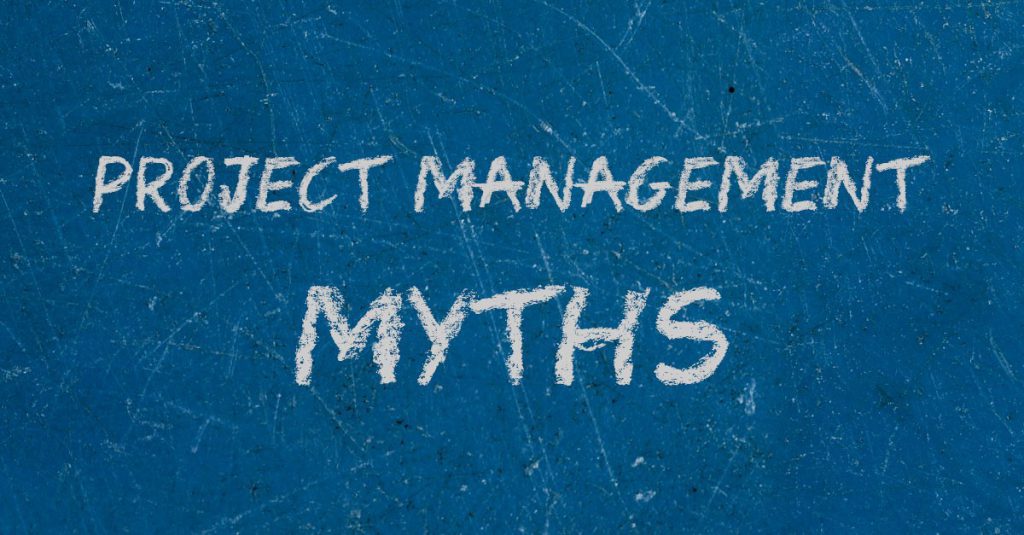
Are your projects high on frustration and low on fulfilment? More wicked than juicy? How you think projects “should ” work may be the source of your misery. Consider the most common myths—the misguided, age-old beliefs about how projects work—then start to debunk them on your projects
Myth No. 1: Projects now are like projects then
Truth: Projects have changed. We haven’t. We fail to distinguish between then and now. Projects “then ” separated well-defined activities into small, independent pieces, with management knowing how they would d fit together. Projects “now ” integrate vast possibilities and discoveries, with no one knowing ahead of time exactly how they’ll fit together. They require the blind to lead the blind, creating fundamentally different demands and opportunities from the projects of bygone eras.
Myth No. 2: You must sacrifice yourself for your project
Truth: You encourage the death march of wicked projects when you sacrifice yourself for your project. A wicked project thrives when you lose sight of your own juicy purpose—your project within the project—for being involved and creates a success that feels like a failure. Don’t allow your good intentions to undermine your individual purpose. Be selfish enough to know what you want. Only then will you be generous enough to make a meaningful contribution.
Myth No. 3: Milling around wastes time
Truth: The most successful projects begin with an essential milling-around period. Defer your best-laid plans until you gain a real understanding of the mess, even when the troops are restless and there’s pressure to “just do it. ” And be well aware that you’ll need more milling-around time before you reach the end, as your project loses its bearings over and over again. Be patient. Be deliberate. Hasten slowly. Success will come.
Myth No. 4: Best practices produce successful projects
Truth: Following others’ best practices undermines your best judgment. Don’t ask the practices to define your project. Invite them to inform your project. Don’t adopt them. Adapt them. Putting a method in charge leaves no one in charge. You know what’s best for your project. Don’t allow others’ methods to become your madness.
Myth No. 5: You have to please the customer
Truth: Your customer is as blind as you are on your project. Don’t follow him—you’ll be the blind following the blind—but, instead, take the lead along with him, even if it means questioning the system until the system works. Put your own good judgment into play. Push back. Prevent the failure that comes when you blindly make the customer the boss.
Myth No. 6: Trust Must be Earned
Truth: Trust must be freely given, not earned. It is the price and the reward of sitting at the same table. Offer your trust genuinely and generously and watch trust and trustworthiness emerge.
Myth No. 7: Without organization and order, chaos results
Truth: Conventional wisdom says that chaos results without organization. Yet sometimes order emerges out of even the messiest situations. What sets these situations apart? Clear purpose. Put people and purpose together and order, not chaos, results. Clarity purpose first. Organization will follow.
Myth No. 8: External motivation works
Truth: No one is apathetic in pursuit of his own goals. Insist that others sacrifice themselves for a project’s goal, and you’ll battle apathy no matter how you try to “motivate ” them. Help others find their own juicy purpose, and you’ll see that motivation takes care of itself.
Myth No. 9: Tight controls improve performance
Truth: A project community isn’t a symphony—an orchestra following a score while a conductor meticulously directs them. It’s a jazz combo—a group agreeing on a key and a rhythm while its musicians share the lead, shifting and embellishing in turn. Their improvisational parts become a seamless whole—a performance that would be robbed of its essence with a tight script and close direction.
Myth No. 10: The plan is everything
Truth: Projects achieve success in unpredictable ways. If you blindly follow a plan, you overlook the possibilities emerging right in front of you. A project plan is like a roadmap made without a survey of the territory. When the map and the territory disagree on your project, believe the territory. In the end, you’ll see that planning is everything—and the plan itself nothing.





